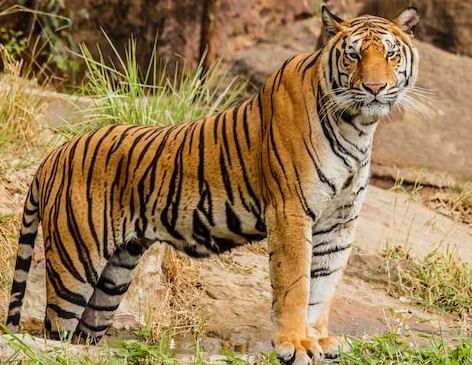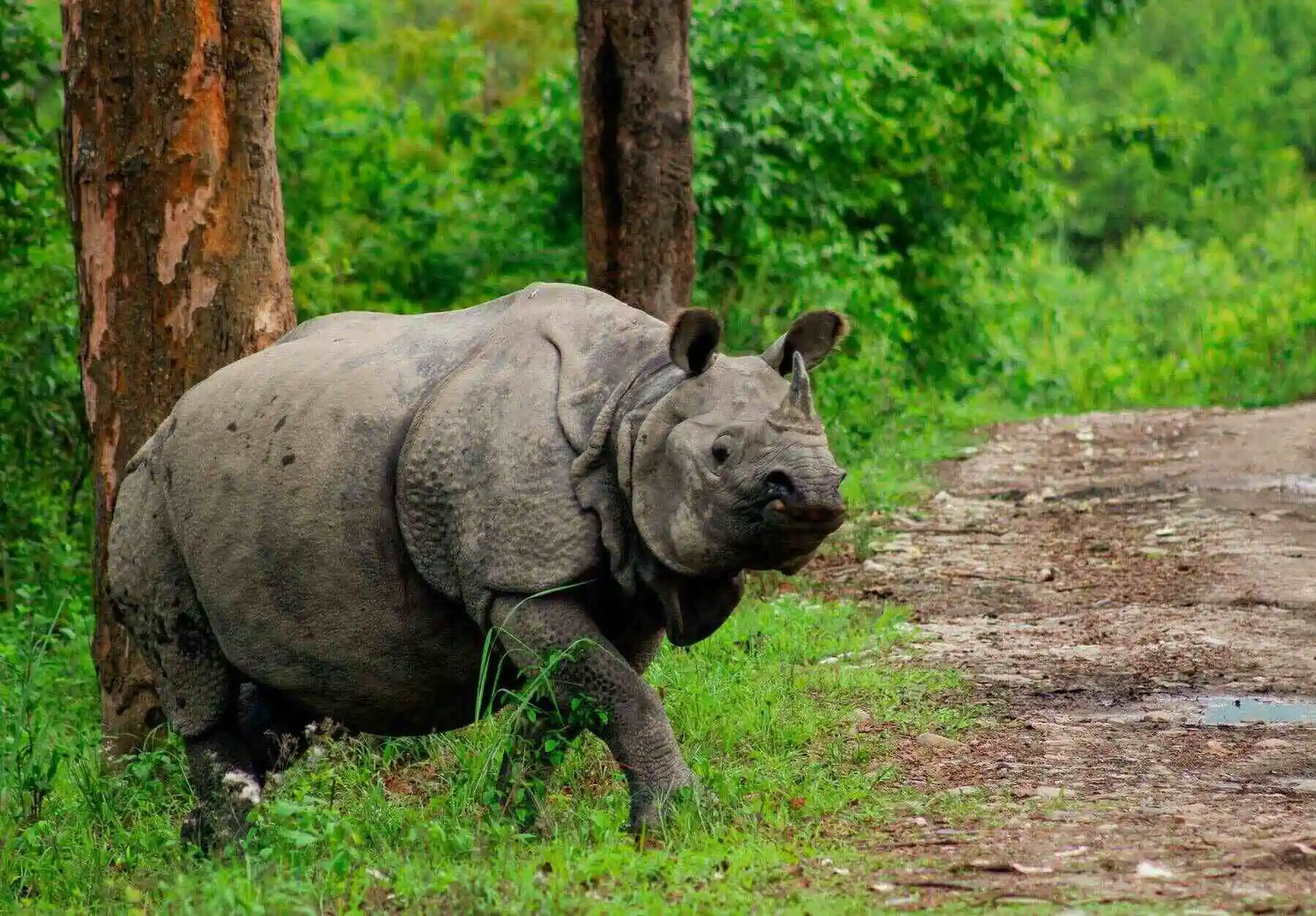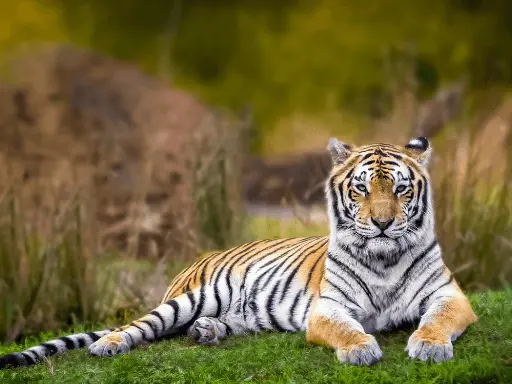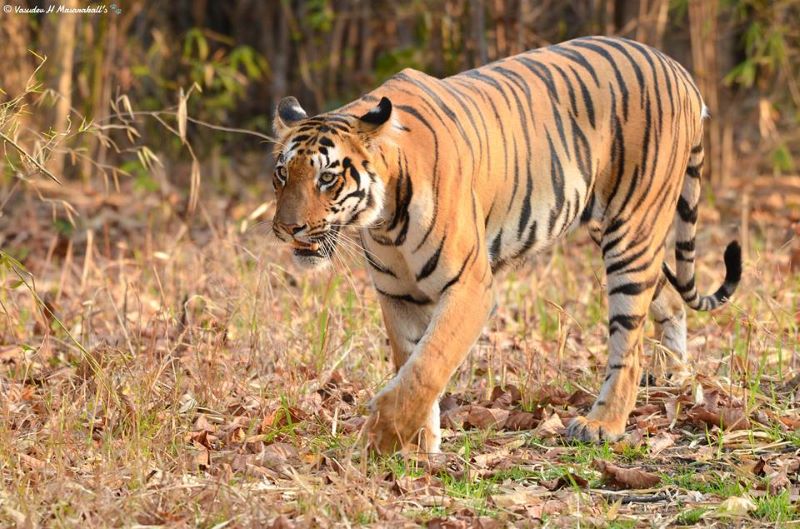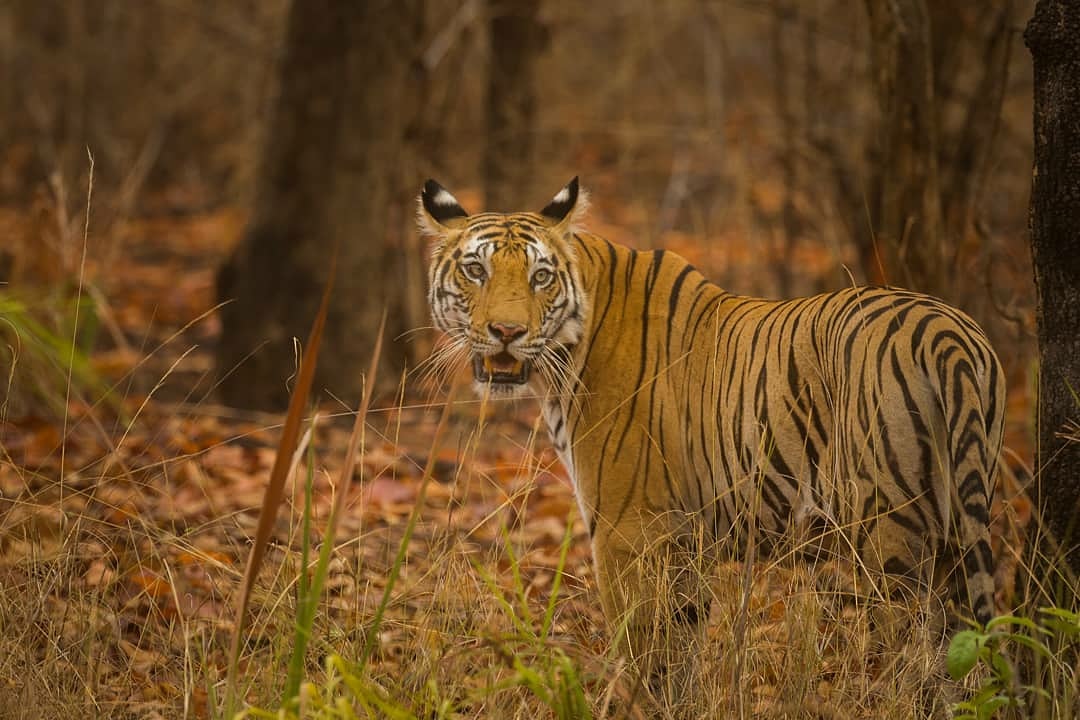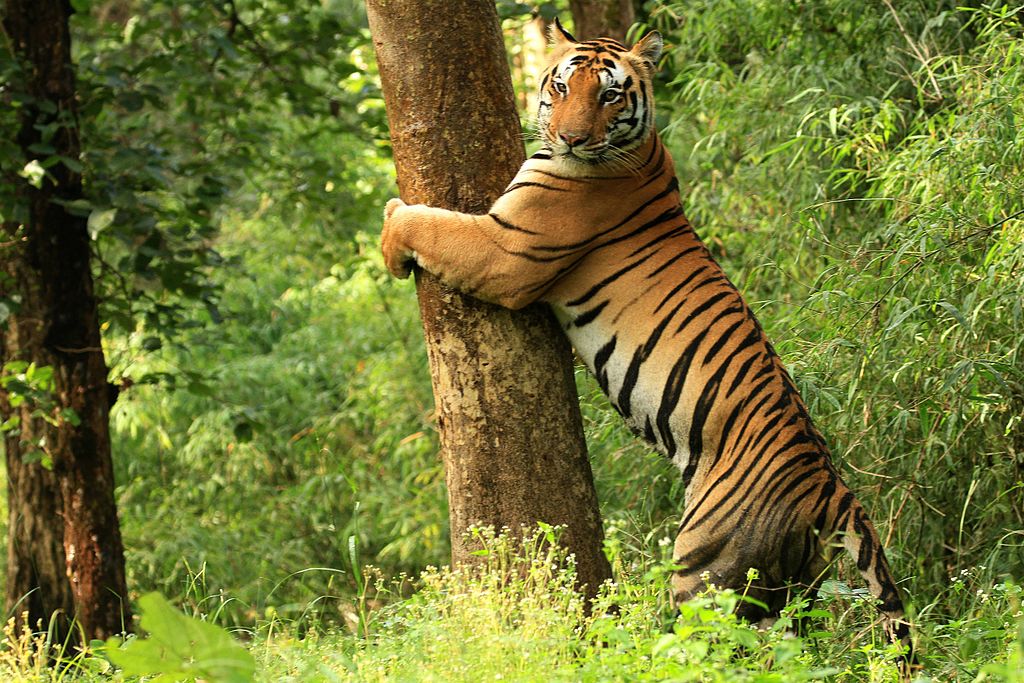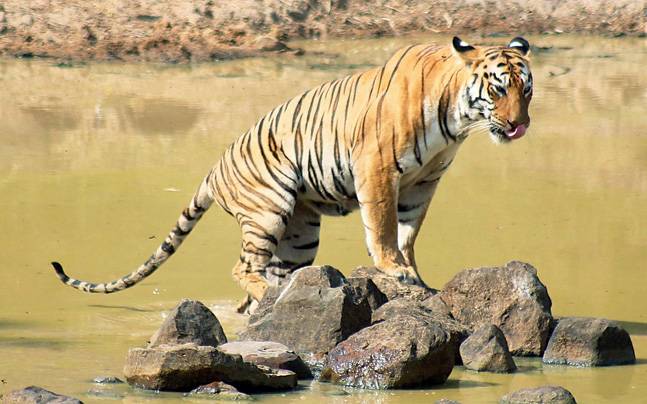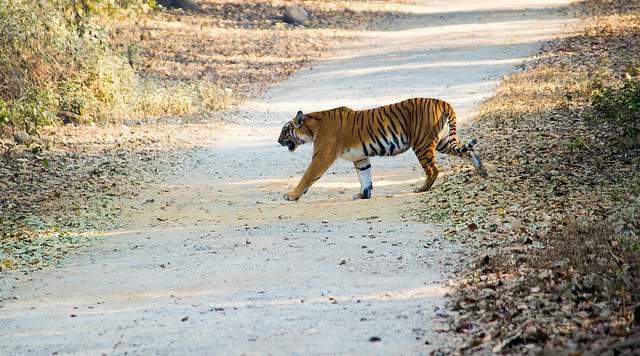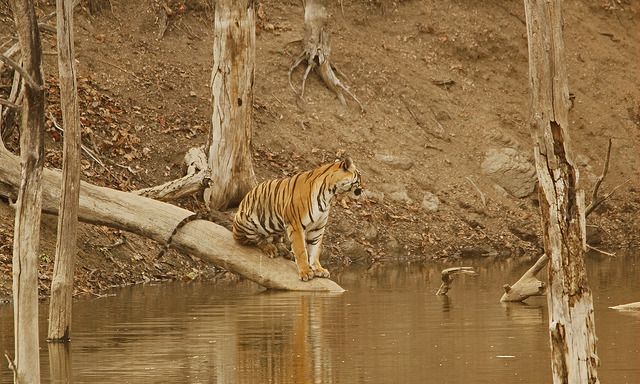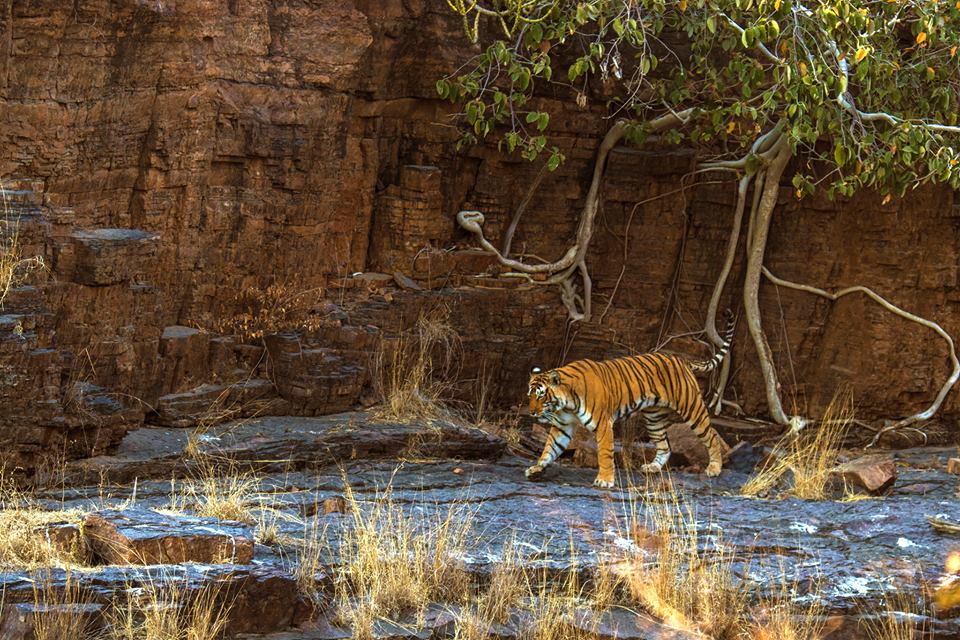Kaziranga National Park
Kaziranga Tiger Reserve
Kaziranga National Park is one of the most famous national park in India. It is located in the north-eastern state of Assam. It is about 430 square kilometers. This park is like paradise for wildlife enthusiasts and nature lovers. This park is famous for its population of Indian single horned rhinos, which makes up two-thirds of the world’s total rhino population.
What makes Kaziranga even more special is its UNESCO World Heritage Site status, recognizing its extraordinary biodiversity and conservation efforts. It’s also an Important Bird Area according to Bird Life International, highlighting its significance for bird conservation. Apart from the single horned rhinos, you will get to see tigers, elephants, and many other animals in their natural habitat. It is like a wildlife wonderland!
When you visit Kaziranga you can enjoy exciting jeep safaris, elephant rides and boat rides on Brahmaputra River. Also you will be amazed by its lush green grassland and dense forest. Winter season is the best time to explore Kaziranga, as the wildlife is more active in this season.
If you are wildlife lover this unique park should be on your travel wish list. The trip to Kaziranga will be truly unforgettable
Interesting Fact – Kaziranga
The term “Kaziranga” is a combination of two Karbi words “kaza” meaning “grass” and “ranga” meaning “land” or “place.”
Prime Predators
In Kaziranga, the prime predators are the majestic Bengal Tigers and the elusive Indian Leopards. These big cats rule the park’s wilderness.
Famous For?
Kaziranga is famous for its legendary rhinoceros residents, including some famous individuals like the single horned rhino named Ganga.
Major Wildlife
Apart from single horned rhinoceros, park is also home to Bengal Tigers, Indian Leopards, wild water buffaloes, elephants, and a variety of bird species.
Flora & Fauna in the Kaziranga
Kaziranga National Park is a fantastic place for its flora and fauna because of its unique location. It is a haven for lovers of the natural world because it is home to an abundance of different plants and animals.
Flora : This place is well mixture of grassy lands, forests and wetlands. Elephant grass named same as elephants due to its height, is a food source for many animals, especially the famous single horned rhino. Other plants you will see here are the kumbhi tree, cotton tree, Indian gooseberry, and elephant apple.
Fauna : Kaziranga is celebrated for its substantial population of Indian single horned rhinos, which roam the grassy expanses and swamps. Other iconic mammals that grace this sanctuary include the majestic Bengal tiger, the gentle giant Asian elephant, and the powerful wild water buffalo.The park is also a habitat for various deer species like the swamp deer, sambar deer, and hog deer. Among the notable mammals are leopards, sloth bears, and hog badgers. Rarely, Kaziranga also surprises the world with sightings of a golden tiger, a stunning and extremely rare color variant of the Bengal tiger.
For bird enthusiasts, Kaziranga is a paradise, hosting a rich avian population. With over 553 bird species recorded here, you can spot the endangered greater adjutant stork, the colorful white-winged duck, and the majestic hornbill.Kaziranga National Park is a clear reminder of why conservation is so important. The rich plant and animal life here show us how beautiful and tough nature can be.
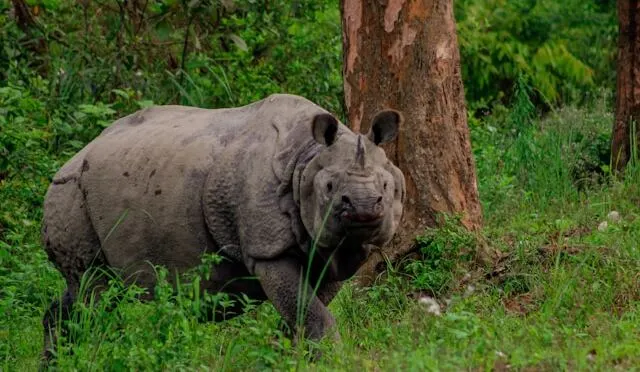
Mammals
- One-horned rhinoceros
- Asian elephant
- Royal Bengal tiger
- Indian wild boar
- Swamp deer
- Hog deer
- Gaur
- Sambar deer
- Indian muntjac
- Small-Clawed otter
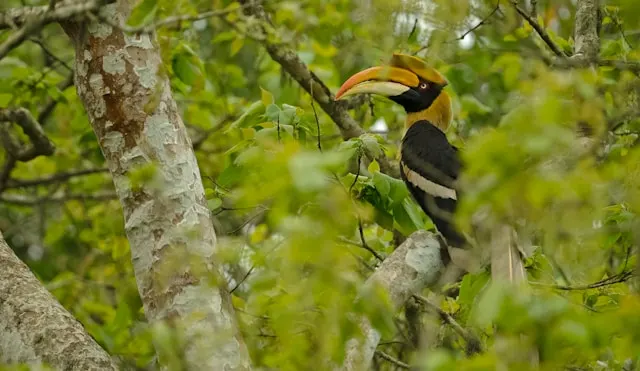
Birds
- Greater Adjutant stork
- Lesser Adjutant stork
- Spot-billed pelican
- Asian Openbill stork
- Greater hornbill
- Oriental pied hornbill
- Pallas’s fish eagle
- Grey-headed fish eagle
- Alexandrine parakeet
- Blyth’s hornbill
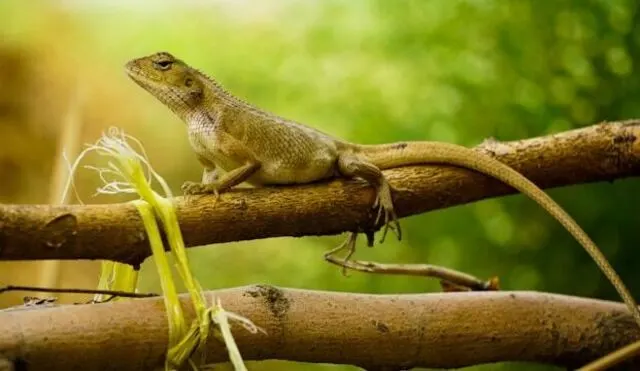
Reptiles
- Ghara mugger crocodile
- Indian python
- Monitor lizard
- Cobra
- Krait
- Gharial
- Water monitor
- Spectacled cobra
- Common krait
- Rat snake
Safari in Kaziranga National Park
Safari in Kaziranga National Park will give you thrilling and amazing experience, which you will never forget. As you Embark on journey you will find yourself surrounded by incredible diversity of flora and fauna.
Safari options in Kaziranga typically include jeep safaris. Jeep safaris are a popular choice for exploring the vast grasslands and dense forests. The open-top jeeps allow for excellent wildlife viewing, and the knowledgeable guides provide insights into the park’s inhabitants.
During your safari, keep your eyes open for the park’s most famous residents, the single horned rhinoceros, tigers, Asian elephants, wild water buffaloes, and a variety of deer species. Additionally, you will be treated to a vibrant avian display, with over 553 bird species gracing the skies of Kaziranga.

The cooler months of October through March are ideal for planning a safari adventure because of the nice weather and peak wildlife activity.
An amazing experience is guaranteed on a safari in Kaziranga National Park, where you can take in the beauty of nature’s wonders. If you wish to enjoy shorter elephant joy rides, these can also be a delightful part of your visit to the park.
Note : For visitors Kaziranga National Park is closed every Wednesday afternoon.
Kaziranga Safari Tours
Kaziranga Budget Safari
Discover the wonders of Kaziranga National Park without breaking the bank. We have created budgetfriendly packages for you, featuring 4 or 6 safari tours that won’t strain your wallet.
Kaziranga Weekend Safari
Make the most of your weekend with our specially crafted Kaziranga weekend tour packages. Enjoy 2 safaris in the national park, ensuring that your Saturday and Sunday are filled with memorable wildlife encounters.
Safari Zones or Gates
The core zone in Kaziranga comprises Burapahar, Ghoramara, Haldibari whereas the Buffer Zone of the park includes Agori, Mihimukh, Kathpora, Bokakhat, Bagori, Harmuti, Kohora, Dolu.
Burapahar Zone
In the easternmost core of Kaziranga, the Burapahar Zone is a sanctuary for primates. Here, you will come across Western Hoolock gibbons, known for their enchanting calls that resonate through the dense forests. Keep your eyes open for other primates like capped langurs and macaques swinging gracefully in the treetops.
Kohora Zone
Located in the central part of the park, the Kohora Zone is famous for its diverse wildlife. Look out for the iconic Indian single horned rhinoceros, peacefully grazing in the grasslands. You might also spot elephants, tigers, and leopards, adding excitement to your adventure.
Bagori Zone
In the westernmost core zone, Bagori is a paradise for bird enthusiasts. As you explore the varied habitats of this zone, you will encounter a wide range of bird species, including the critically endangered greater adjutant stork, the colorful white-winged duck, and the majestic hornbill.
Each zone of Kaziranga National Park offers a unique and informative wildlife experience that’s sure to leave a lasting impression.
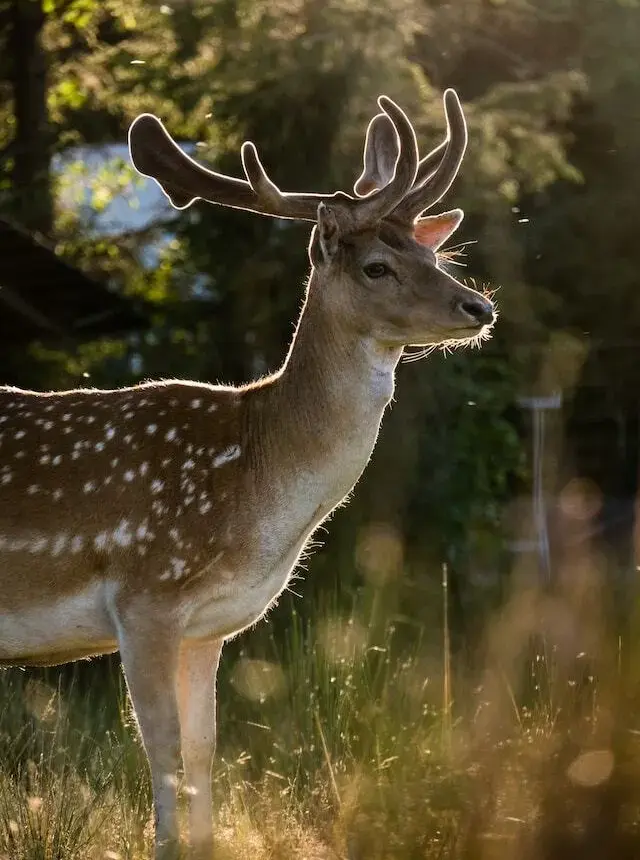
Zone Name |
Entry Gate |
Primary Safari Type |
Famous For |
|---|---|---|---|
|
Kohora (Central Range)
|
Kohora Gate
|
Jeep & Elephant
|
One-Horned Rhino, Elephants
|
|
Bagori (Western Range)
|
Bagori Gate
|
Jeep & Elephant
|
Rhino, Elephants & Lush Grassland
|
|
Agaratoli (Eastern Range)
|
Agaratoli Gate
|
Jeep & Boat
|
Birds, Riverine Wildlife, Boat Safari
|
|
Burapahar Range
|
Ghorakati Gate
|
Jeep (Sometimes Trekking)
|
Birds, Primates
|
How to book Safari in Kaziranga Tiger Reserve
To book an end-to-end safari package in Kaziranga National Park including airport transfer, accommodation, meals, and internal transfer, you may contact Big Cats India, or schedule a free discussion with our experts to understand the best safari zone to book, based on your area of interest.
It is advised to plan your safari well in advance to get the best zones for sightings.
If you are not sure which gate(s) to choose from, you can contact Big Cats India or message us for any assistance in booking your safari in Kaziranga.
You can also book Kaziranga Safari online from the mp tourism website where you can also see the exact entry fee, jeep safari fee, elephant safari cost, and guide fee. However, this website only books your safari permits, not the accommodation, food, and internal transfer to the reserve gates.
Open Jeep Safari
Imagine going on a thrilling ride in an open jeep with a small group of 4-6 people. You’ll have an expert guide driving you, ensuring you get a close-up look at Kaziranga’s incredible wildlife. The open jeep allows you to feel the breeze and capture amazing photos. It’s a personal adventure where you might spot new and exciting animals around every corner.
River Cruise
In Kaziranga National Park, there is an exciting way to explore nature, the River Cruise. It is like a big boat that takes you on a watery adventure through the park. This river cruise is fantastic if you like being in a group. You will have fellow nature lovers with you, making it a fun and social experience. While you are on the cruise, you can still see Kaziranga’s famous one-horned rhinoceros and tigers. It is like going on a safari, but on water.
| Summer | Pre-Winter | Winters |
|---|---|---|
| 5:30 AM to 8:30 AM | 5:30 AM to 8:30 AM | 6:00 AM to 9:00 AM |
| Summer | Pre-Winter | Winters |
|---|---|---|
| 3:00 PM to before sunset | 3:00 PM to before sunset | 2:00 PM to before sunset |
Weather in Kaziranga
Kaziranga National Park experiences distinct seasons throughout the year, each offering unique opportunities for wildlife viewing and nature appreciation.
Winter (December-February) brings cool, dry conditions with temperatures ranging from 5°C to 25°C (41°F-77°F). This is considered the prime game viewing season as animals congregate around shrinking water sources, making them more visible and easier to spot.
Summer (March-May) sees a rise in temperatures from 20°C to 35°C (68°F-95°F), accompanied by dry weather. The park’s grasslands turn a golden hue, and animals can often be seen in the sparse vegetation near water bodies, seeking respite from the heat.
The monsoon season (June-September) brings heavy rainfall, transforming the landscape into a lush, green paradise. This is a time of rejuvenation, with many animals giving birth, allowing visitors to witness newborn calves, fawns, and cubs taking their first steps.
Post-monsoon (October-November), the park experiences pleasant weather with temperatures ranging from 15°C to 30°C (59°F-86°F). The vegetation remains vibrant and fresh after the rains, making it an ideal time for birdwatchers to spot migratory birds arriving to join the park’s resident avian population.
Regardless of the season, Kaziranga National Park offers a unique experience for nature lovers, with each season presenting its own distinct charm and opportunities for wildlife encounters and natural wonders.
| Month | Jan | Feb | Mar | Apr | May | Jun | Jul | Aug | Sep | Oct | Nov | Dec |
| Min(°C) | 5°C | 8°C | 12°C |
17°C |
23°C | 24°C | 25°C | 25°C | 23°C | 20°C | 13°C | 8°C |
| Max(°C) | 23°C | 25°C | 28°C | 32°C | 33°C | 32°C | 31°C | 31°C | 30°C | 29°C | 26°C | 22°C |
| Month | Min(°C) | Max(°C) |
| Jan | 5°C | 23°C |
| Feb | 8°C | 25°C |
| Mar | 12°C | 28°C |
| Apr | 17°C | 32°C |
| May | 23°C | 33°C |
| Jun | 24°C | 32°C |
| Jul | 25°C | 31°C |
| Aug | 25°C | 31°C |
| Sep | 23°C | 30°C |
| Oct | 20°C | 29°C |
| Nov | 13°C | 26°C |
| Dec | 8°C | 22°C |
Kaziranga in Winters
During the winter months, which stretch from November to February, Kaziranga National Park enjoys pleasant and cool weather. The park’s grasslands are beautifully golden, and wildlife is active, making it an excellent time for animal sightings. The famous single horned rhinoceros, elephants, and tigers are frequently spotted. Birdwatchers will delight in the wide variety of avian species that make Kaziranga their winter home. It is an ideal time to explore the park comfortably without the barrier of monsoon rains.
Kaziranga in Summers
Summer, from March to June, brings warmer temperatures to Kaziranga. The park’s landscape is lush and green during this time, and it is an excellent period for birdwatching. While some animals become less active during the heat of the day, you can still spot them around water bodies, where they come to cool off. Elephants, in particular, are frequently seen. It is a great time for a more leisurely visit, as the weather is generally clear and dry.
Kaziranga in Monsoon
Monsoon, from June to September, is when Kaziranga receives heavy rainfall. The park comes alive with fresh foliage, but the tall grass can make wildlife sightings a bit challenging. Due to these core zones remain closed. However, buffer zones may be open for safris and you make spot wildlife in this season too. It is a time when the park looks young, but it is essential to be prepared for wet and muddy conditions if you plan a visit during the monsoon.
Best time to spot tigers at Kaziranga National Park
The best time to see tigers in Kaziranga National Park in there natural habitat is in the winter months, which span from November to February. It is when the weather is nice and cool and the park’s grasslands are dry. This dry season makes it easier to spot wildlife, especially tigers. Tigers tend to be more active during these months as they come out in search of water and prey. So, if you are eager to see these magnificent creatures, plan your Kaziranga visit during the winter season for the best chance of a tiger encounter.
Recommended Tour
Kaziranga National Park
WhatsApp now to enquire or block your seat
How to Reach the Park
By Air
The nearest airports to Kaziranga are Tezpur Airport, about 52 kilometers away, and Lokpriya Gopinath Bordoloi International Airport in Guwahati, around 225 kilometers from the park. You can easily access these airports for air travel to Kaziranga.
By Road
Kaziranga is well-connected by road, with National Highway 37 running through the park. You can reach Kaziranga by bus or car from various nearby cities, including Guwahati and Tezpur.
By Rail
The closest major railway station is Furkating, approximately 75 kilometers from Kaziranga. From Furkating, you can hire a taxi or take a bus to reach the park. Other railhead options include Guwahati and Tezpur.
| From | By Air+Road (Hrs) | By Road | By Rail+Road (Hrs) |
|---|---|---|---|
| New Delhi | 0 Air + 0 Road | 0 Hrs | 0 Rail + 0 Road |
| Guwahati | NA | 0 Hrs |
NA |
| Jorhat | 0 Air + 0 Road | 0 Hrs | 0 Rail + 0 Road |
| Kolkata | 0 Air + 0 Road | 0 Hrs | 0 Rail + 0 Road |
| Mumbai | 0 Air + 0 Road | 0 Hrs | 0 Rail + 0 Road |
| Pune | NA | 0 Hrs | 0 Rail + 0 Road |
| Bengaluru | 0 Air + 0 Road | 0 Hrs | 0 Rail + 0 Road |
| From | Time to arrive |
|---|---|
| Kanha TR | 5 Hour |
| Bandhavgarh TR | 5.45 Hours |
| Tadoba TR | 5 Hours |
| Umred Karhandla | 1.50 Hrs Road |
| Corbett TR | 4 Hrs Air + 4.30 Hrs Road |
| Tipeshwar WLS | 4 Hrs Road |
Things you should carry with you
Essential things to carry for your Kaziranga Tiger Safari
Your DSLR or Camera to capture your memorable safari moment.
Binoculars to view the wildlife from a safe distance.
Plenty of water to keep you dehydrated on a sunny day.
Hat & Shades to protect from direct sunlight.
Bandanna or Cotton Scarf to cover your face and avoid dust.
Winter wear or jacket if you are doing safari during winters. It really gets cold very quickly after sunsets in Jungle.
Rain Cover to save you and your gears from water during rain.
Kaziranga can get really colder very quickly in the evening so consider carrying woolens in the afternoon safari in Kaziranga during winters season

Some History about Kaziranga Tiger Reserve
Kaziranga National park has some fascinating history. In 1905 park is established as reserve forest for protection to the endangered Indian single horned rhino
Over the year it became more famous. Then, in 1950 officially it was declared as wildlife sanctuary, and in 1974 it earned the status of a national park. In 1985 it got recognised as a UNESCO world Heritage Site.
Over the years, Kaziranga has been a pillar of support for the preservation of wildlife. Its primary focus has been on safeguarding the single horned rhino, which was on the age of extinction. Thanks to dedicated efforts, the park has witnessed a significant increase in the rhino population, becoming a symbol of successful conservation.
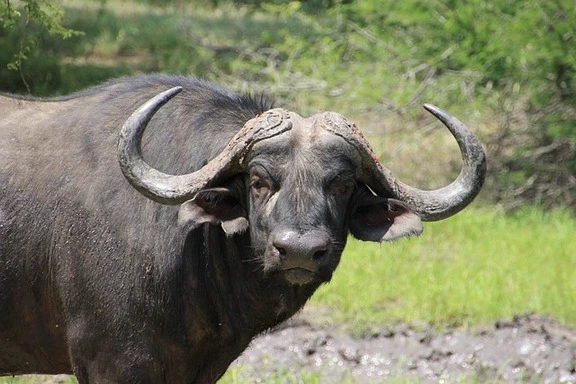
Today, Kaziranga stands as a shining example of conservation and a sanctuary for a diverse array of wildlife. It is a destination not to be missed for those who want to experience nature’s incredible journey of preservation and resilience.
Why visit Kaziranga ?
Step into Kaziranga, where nature’s finest moments await. This sanctuary welcomes wildlife lovers to witness two-thirds of the world’s single horned rhinoceros population in their natural home. But that’s not all, Kaziranga is also home to tigers, elephants, and a variety of beautiful birds.
The real magic happens when you take a jeep or canter safari into the wild heart of the park. You will get up close to incredible animals and be part of their world.
Kaziranga’s stunning landscape, featuring lush grasslands and dense forests, is a true visual delight. So, if you are all set for a journey you will cherish forever, Kaziranga is the perfect destination. Your visit is guaranteed to craft memories that will stay with you for a lifetime.
Kaziranga General Info Card
- Total Area: Approximately 430 Sq. Km
- Location: Assam, India
- Notified as National Park: 1974
- Recognised as UNESCO world Heritage Site: 1985
- Nearest Airport: Tezpur (1 Hour)
- Nearest Railway Junction:Furkating (1.15 Hours)
Kaziranga Wildlife Info Card
- Carnivorous: Bengal Tigers, Indian Leopards, Jungle Cats, Dholes.
- Herbivorous: Indian elephants, Single horned rhinoceros, Swamp deer (Barasingha), Sambar deer, Hog deer, Water buffaloes.
- Omnivorous: Sloth bears, Rhesus macaques, Mongooses.
- Birds: 553 bird species.
Kaziranga Tour Info Card
- Ideal Tour Length: 3N4D or 6 Safaris
- Can extend with: Kanha, Tadoba, Bandhavgarh
- Tour Starting points:Delhi, Guwahati
- Is tour Customizable?: Yes
- Safari Options: Open Jeep, Canter
An Ideal travel plan for Kaziranga National Park
An Ideal Travel Plan for Kaziranga National Park would look something like the image below. However, For our international guests, Landing in Delhi/Mumbai would be a better option then a connecting flight from Delhi/Mumbai would be a good option. We also have another tour starting from Delhi covering other historical places along with the national parks.

